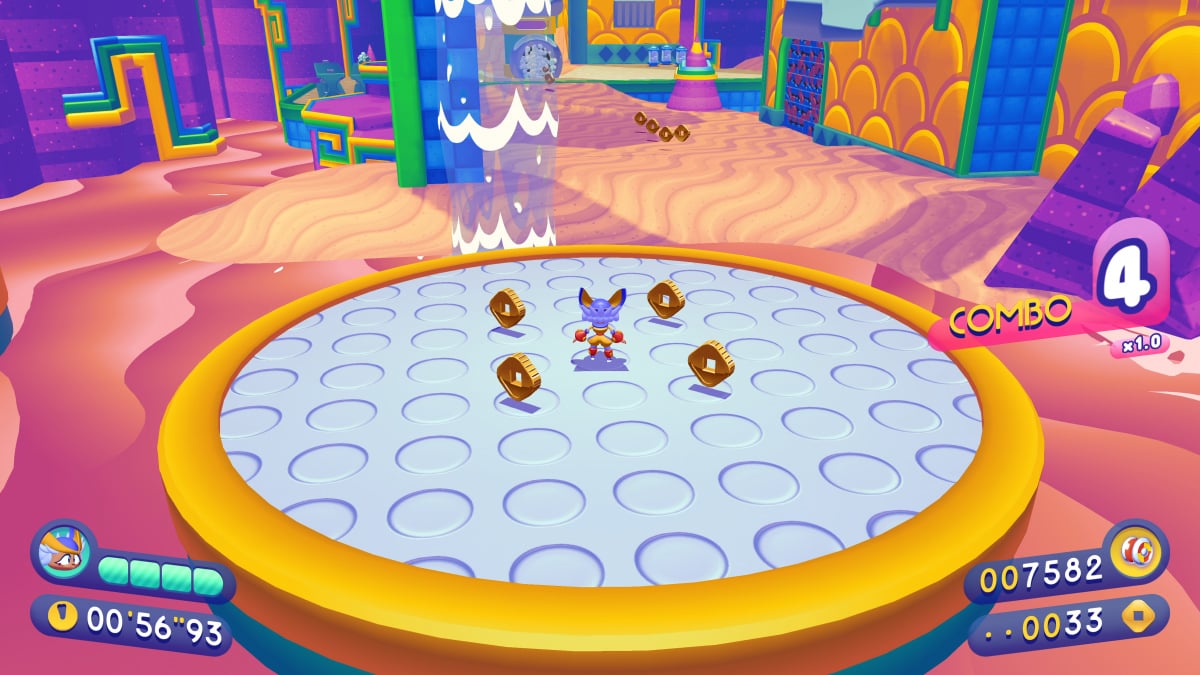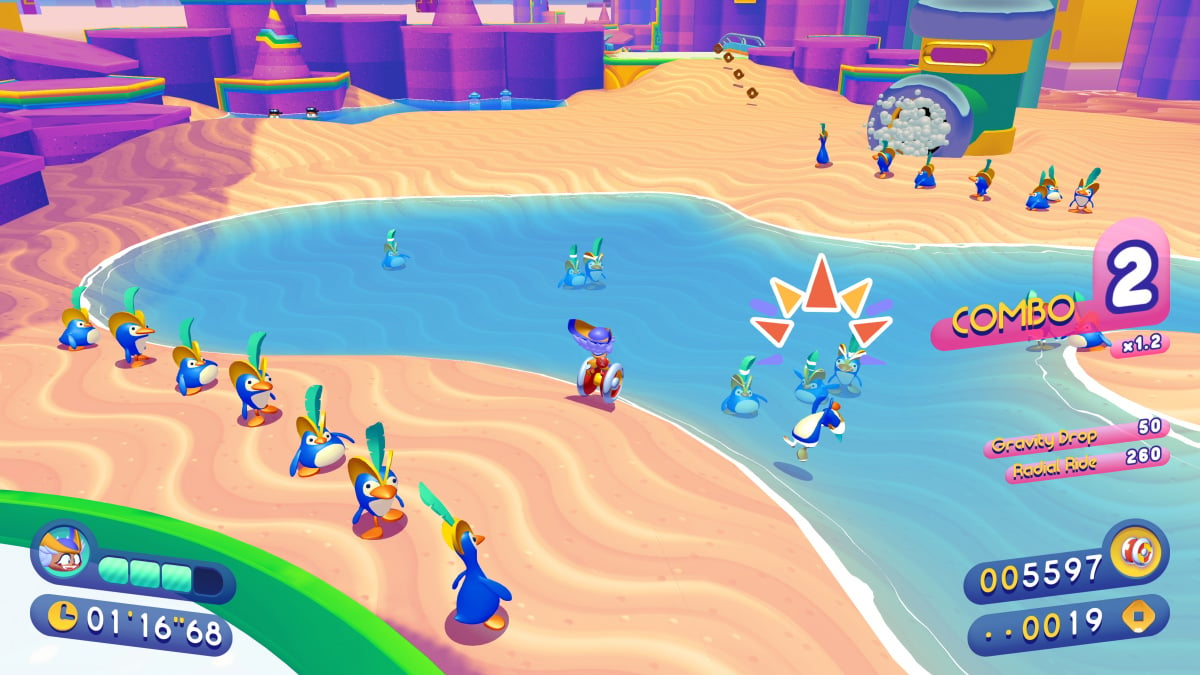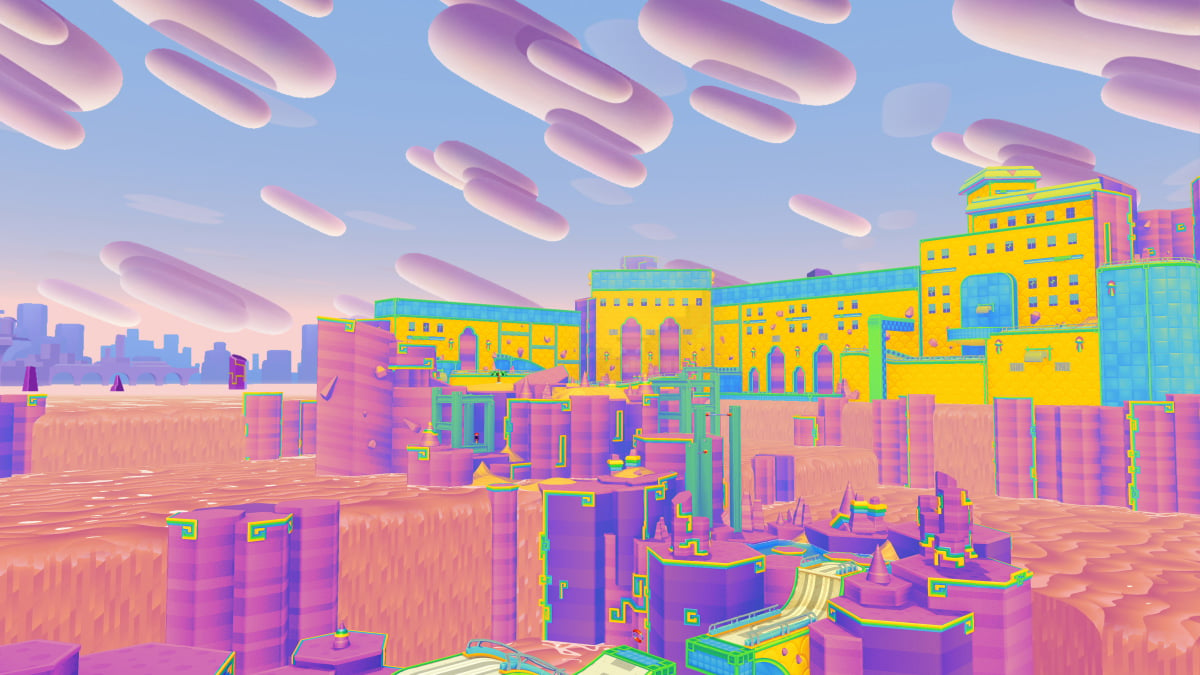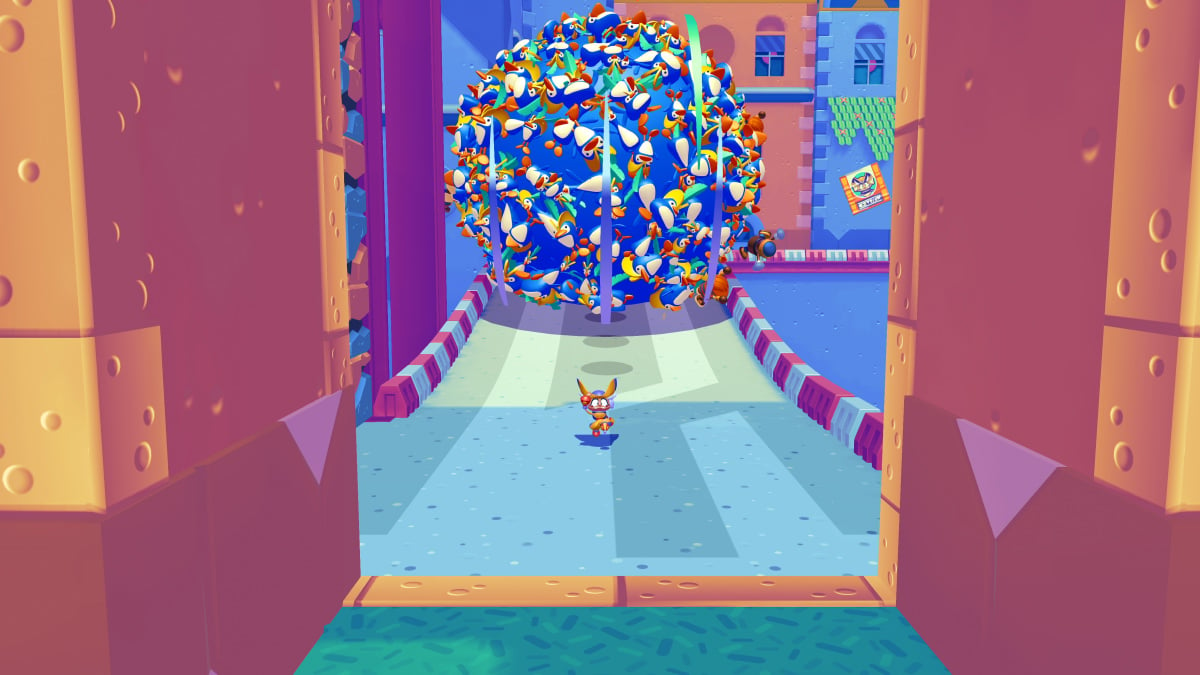Preview of “Penny’s Big Breakaway” – Bauhaus Rhapsody

introduction
Sonic Mania is widely considered one of Blue Blur’s best games. More than six years after its release in 2017, that sentiment remains as strong as ever, even after recent outings like Sonic Frontiers 2022 and this year’s Sonic Superstars. While it was published by Sega, longtime Sonic fans who grew up with the series, such as Christian Whitehead, Hunter Bridges, Dave Padilla, Brad Flick, Tom Fry, and others, led the game’s development. And without speculating too much, the level of separation offered to these fans and developers made Sonic Mania feel like both a breath of fresh air and a return to form.
In order not to delve too deeply into the world of independent contracts and to maintain the friendship between themselves, which was strengthened by the development of Sonic Mania, they founded Evening Star five months after the game’s release. Studio CEO and executive producer Padilla, CTO and game director Bridges, creative director and lead engine architect Whitehead, design director Flick and art director Fry all admit that the simple sequel was right there: a 2D platformer in the style of Sonic Mania. This is what fans wanted from Sonic Mania, and to their credit they worked with Sega on possible sequel ideas before parting ways amicably. But Evening Star wasn’t satisfied with the easy answer and set to work on a 3D momentum-based platformer inspired by Tony Hawk’s Pro Skater, an early 20th century ballet, and 1995’s Jumping Flash for PlayStation was inspired.
Evening Star
“We always had the idea: ‘Wouldn’t it be great if we had a character who could use a yo-yo for different movements?'” says Whitehead. “At first we jotted them down on a 2D board, but there were several simultaneous themes swirling around in the background. At least for me, my perspective as a developer is that I’ve been working exclusively on 2D pixel art for the last decade, so I really wanted to expand and prove that I could do more than just one specific genre.”
Whitehead says he knows Penny’s Big Breakaway is another platformer, but says it’s a different type of game in a different dimension. After playing the game myself for over two hours and experiencing the first three of eleven regions in the world of Macaroon, including three different boss stages and special Star Globe bonus levels, this much is clear. Knowing that Sonic Mania’s development leaders are responsible for what I play, it’s impossible to deny the dynamic inspiration that lies within both titles. But Whitehead is right – even beyond the obvious switch from 2D to 3D, “Penny’s Big Breakaway” has a different flavor. For these developers, it’s not just a new twist, but something unique in the long-standing platforming genre.
Break the standards

Break the standards
I’m terrible at the game, at least in the first few stages. It doesn’t help that I just watched Bridges race through them like he was someone who knew the challenges of each stage, but I’m slow and struggling to follow yo-yo opponent Penny’s yo-yo-based moves over ramps, flagpoles , gaps etc. to combine. and more. Penny can throw her yo-yo forward to attack enemies and smash barrels by pressing a button on a controller or, even stranger, by moving the right stick in a direction. And this directional input is independent of Penny, meaning you can move the yo-yo to the right while she goes left. Admittedly, it’s bizarre at first – not because it doesn’t feel good, but because it’s so different from the way I normally interact with the combat and movement set of a 3D platforming mascot.
In the same way, Penny can do a double jump, but instead of gaining a decent amount of height with a second jump, she barely gains noticeably; The purpose of her double jump is not to gain height, but to stop momentum, Bridges tells me. She can dash by throwing her yo-yo forward by moving the right stick twice in the same direction, and she can also swing left and right, forward and backward on her yo-yo anywhere in the air.

Although it takes some time – which I welcome because it’s rare that I experience a new moveset that challenges my preconceptions about a genre – I end playing Penny’s Big Breakaway with the realization that it’s not to create a 3D platformer in the style of Nintendo, another prejudice being challenged. On the one hand, it’s a platformer inspired by Tony Hawk’s Pro Skater with an emphasis on dynamics that will appeal strongly to speedrunners and time trial fans, with a constant score and a Devil May Cry-style combo tracker on the right side of the screen. to. On the other hand, it’s a team’s love letter to the strange and sometimes broken platformers from the early days of the 3D genre. Together as a complete package it reigns supreme.
“The rules (for 3D platformers) weren’t really established at that point,” says Whitehead. “I remember playing a lot of PlayStation games as a kid that were a little rough around the edges but tried to explore platforming mechanics in 3D, and I felt really inspired by that era.” I experienced that as a child, but I also wanted to experience that as a developer.”
A roundtable philosophy

A roundtable philosophy
Whitehead, who admits to creative ego, says he wants to try to create a PlayStation-style 3D platformer that addresses the problems he had growing up with the genre. The little piece I played proves that Evening Star is on the right track. But speaking to others at Evening Star like Bridges, Fry, Flick and Padilla, it’s clear that everyone is on board with the idea. Even Fry, the art director on paper, says he was involved in all sorts of decisions outside of his scope of development, a philosophy that everyone else also expresses. “Collaboration is an essential part of the team,” says Fry. “Nobody has an idea and everyone follows it like the Pied Piper. We believe that everyone can bring something valuable to the pot, and art is certainly no different. I call it a roundtable philosophy.”
This collaborative energy even found its way into the so far astonishing score of “Penny’s Big Breakaway,” which utilizes a wide range of strange synthesizer instruments, instruments from genres like Latin and calypso, and more to create a jazz-like musical symphony. Bridges, Whitehead and others on the team contributed to the score in different ways, even after Evening Star hired Streets of Rage 4 and TMNT: Shredder’s Revenge composers Tee Lopes, with whom the team had also worked on Sonic Mania, and Sean Bialo had The score.
Performance art

Performance art
If there’s one aspect of Penny’s Big Breakaway that most hints at its early PlayStation inspiration, it’s its art direction. Inspired by the Triadic Ballet of the early 20th century and the Germanic Bauhaus art movement of the same period, which combined colorful abstract ideas with primitive geometry, the world of Macaroon feels like one grand performance. Your social status is defined by the service you can provide to the world’s inhabitants. Each stage ends with a “Busker” bonus, which requires a quick and accurate completion of the QTE sequence to add additional points to your total score. Each stage has three resident challenges, such as collecting four missing electric company tax forms while riding Penny’s Yo-Yo like a unicycle, and during the Busker Bonus, the residents you help see you when performing.
Even the conceit of the narrative speaks to the idea that performance art is everything – Penny attends a talent show after finding a special yo-yo with an insatiable hunger, and instead of wowing the emperor with a breathtaking performance, she eats the yo -Yo the emperor’s clothes. She spends the rest of the game getting further and further away from the Emperor and Macaroon’s capital, chased to the edge of the world by the Emperor’s ever-present penguins, only temporarily slowed by her efforts, and never completely defeated.

“We want the game to keep the flow and the dribbling going,” Bridges said. “We really wanted to have this rhythm (…) and never interrupt it. It’s a game that allows the most experienced players to theoretically progress through a level in an unbroken series of moves. This is Penny’s masterful performance.”
Because of this, Evening Star controls the camera at all times, which requires my brain to adjust. Since there are three resident challenges to complete and three displays to find in each level, I want to explore every corner. But you can’t do that without camera controls, and I hate that at first. Only after realizing that there is nothing to miss if Evening Star doesn’t let the camera take me here or there do I start playing on the team’s terms. This shift is liberating because I realize that Penny’s platforming playground relies on my ability to move on and get where Evening Star took me with its design. With thoughtful moves and a keen eye, overcoming every challenge and finding every showpiece seems to be part of Penny’s “performance” at every stage.

The game contradicted my idea of a 3D platformer. I wanted to take it slow; I wanted to search every corner for something; I wanted to take my time. But Penny’s Big Breakaway is a welcome antidote to everything Nintendo taught me (mostly) about the genre. It’s a bold design choice that I would have described as risky on paper. Speaking to Evening Star, it became clear that the company was aware of the risk of jumping into its first original game and IP. However, every member I spoke to expressed modest confidence in their respective aspects of game development.
“There are a lot of skills that we really excel at when developing games and a lot of specific nuances that we bring to the table because of our team dynamics and our tools, and I don’t think it will be a complete surprise,” says Padilla. “I think a lot of people will look at this as something completely new and something completely original, but in terms of what we’ve done before and what we’re doing now, and hopefully what we’ll do in the future, too People will be able to see the connections.”
This article originally appeared in issue 362 of Game Informer.





